As we left Franz Josef we were aware that our time in New Zealand was drawing to a close, but there were still many sights and experiences waiting for us.
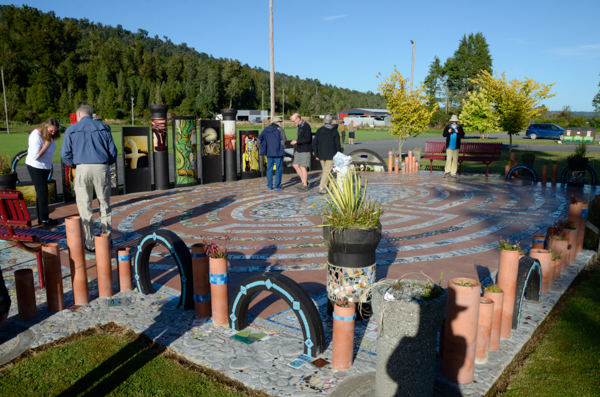
We stopped in a small coastal town -- one of many hit hard in recent decades by the end of farm subsidies. The land is marginal and far from markets. The subsidies for fertilizer and transportation were vital for keeping small farms afloat. Without them many were abandoned.
The rise in tourism and different types of crops have triggered recovery. This particular town celebrates the spirit of optimism with a labyrinth created by local school children. Many of the tiles were handmade and signed.
The town's claim to historical fame dates back to the first solo flight from Australia to New Zealand!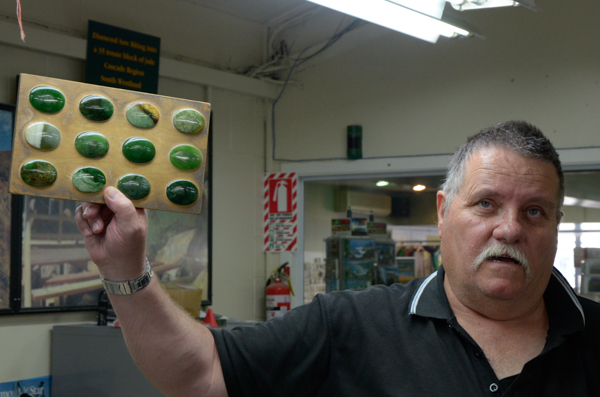
Our next destination was Hokitika, (this site may not load in Internet Explorer, but all other major browsers tested OK) a major center for processing greenstone. This mineral, a type of jade, was prized by the Maori for its hardness, and used to make tools and weapons. By law all greenstone found today in New Zealand belongs to the Maori.
At this processing plant we saw the ways the material is worked and fashioned into modern goods, typically jewelry. The guide describes the various common color combinations.
The value of an individual stone does not come from the color, like typical jade, but from the hardness and size.
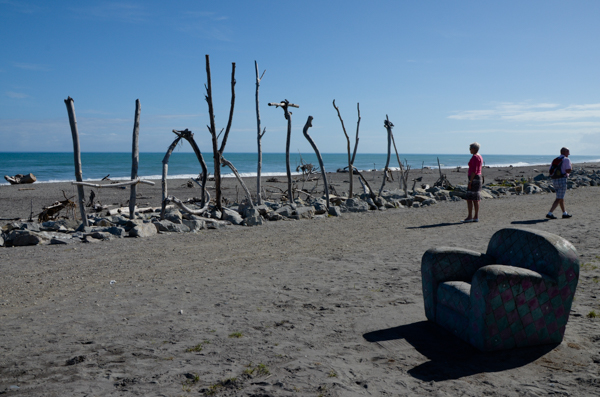
Hokitika hosts an annual driftwood sculpture festival. Folks make all kinds of whimsical designs from things found on the beach. I wish I had space to include more of them.
The "armchair" is made of painted concrete and memorializes a couple who were instrumental in establishing an artistic presence in Hokitika. I'm sure there is a story behind it.
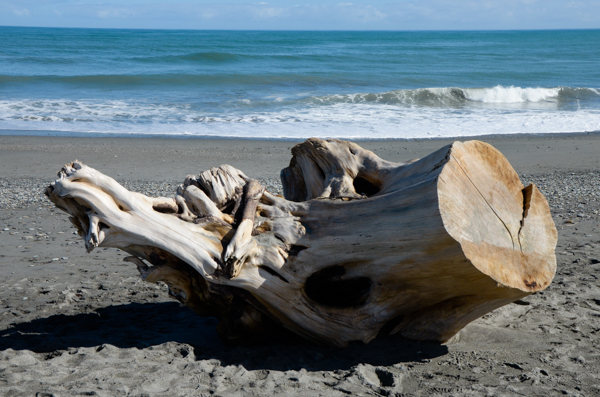
This enormous driftwood stump is a sculpture in itself. The cut end enabled me to see and appreciate the absence of growth rings in this congenial climate where a tree grows all year round.
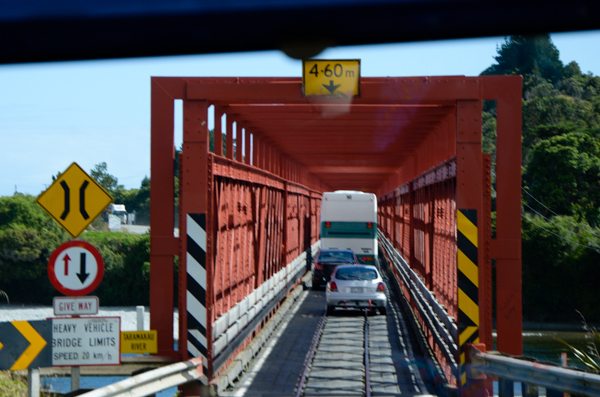
The vast majority of bridges in Westland are one lane to minimize construction cost. This one is unique in that train tracks also run along the roadway. The presence of a train and traffic going both ways would be pretty exciting, but we seldom encountered any traffic at all at a bridge. This one is an exception.
The bridges are a nemesis for tourists who rent cars -- especially if they aren't familiar with driving on the left side of the road and don't know how to interpret the yield signs. There was an uproar in the press while we were there about "killer tourists" and their lack of driving skills.
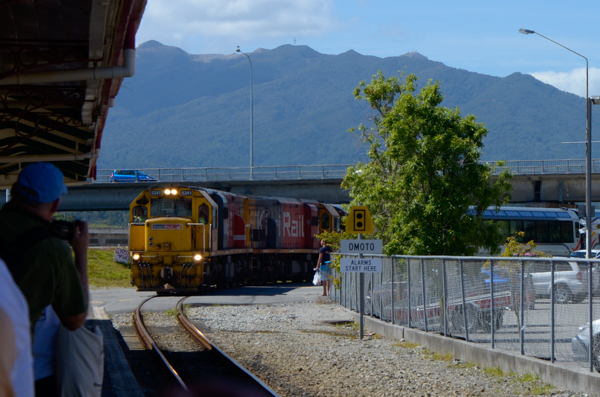
The plan was for us to have lunch on our own in Greymouth and then catch the train to Christchurch. Chas and Taf took the bus across the mountains to meet us at the station on the other side.
Signal problems along the track made the train late. VERY late. It finally showed up to great cheers.
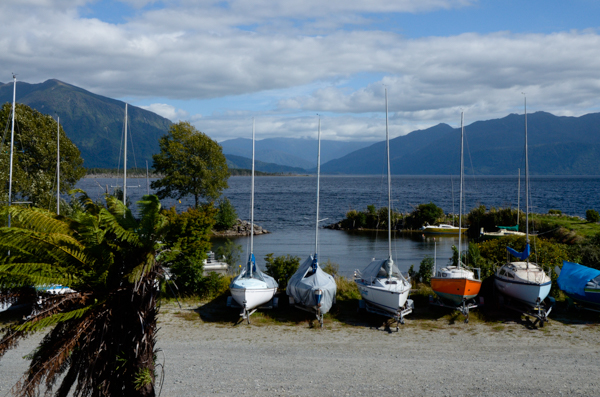
One of the unusual sights along the mountainous railway crossing was the Lake Brunner Yacht Club.
If you weren't a member you had to pay $10 to launch your boat here.
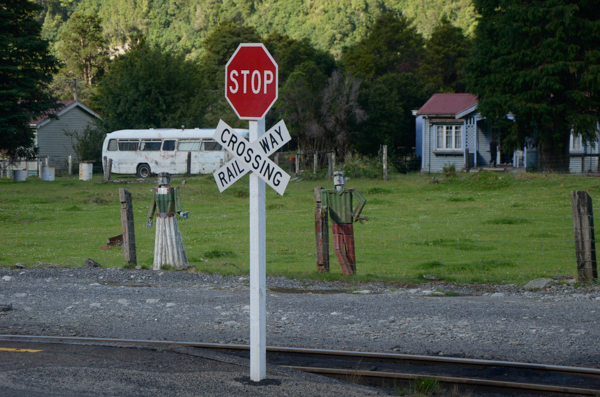
The train made several stops, but the longest was at Arthur's Pass, the access point for many of the alpine tracks.
The village was constructed to house workers for the Otira tunnel. At the time the tunnel was built in the early 20th century it was one of the longest railway tunnels in the world.
Many of the workers' houses have been turned into vacation rentals.
The two figures of found materials made a clever welcoming party.
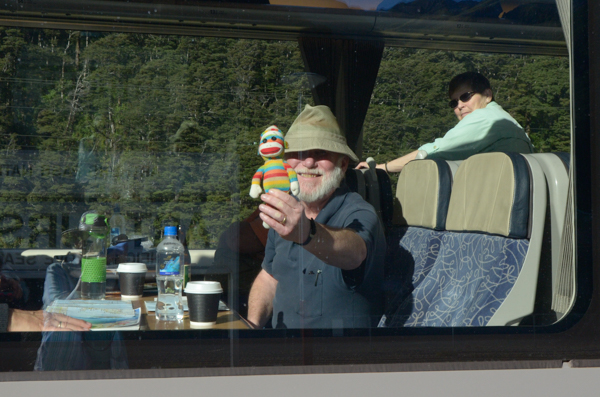
"Silly Sock Monkey" had become a fixture on the trip. One of our travelers used this little guy to enliven the picture she texted to her young grandson every evening. After a while he was adopted by many of us. Jim shows him off at Arthur's Pass.
Other similar stuffed creatures we saw on our travels included a kiwi, a dog and a tiger. At least there weren't any garden gnomes -- as far as I know.
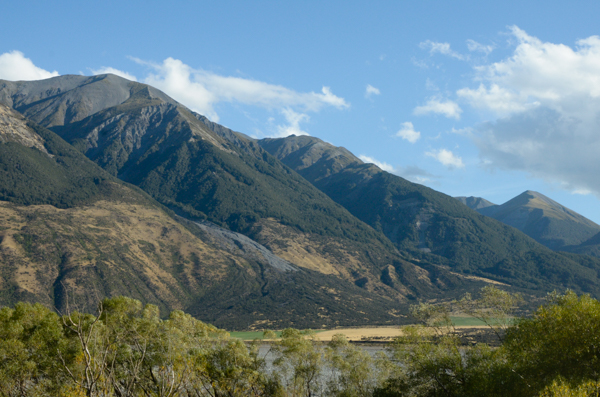
As we cross the spine of the country, more and more mountains have peaks above the tree line. The river behind the trees is the Waimakariri. Later on it entered a dramatic gorge.
The huge landslide on the far bank of the river shows the erosion of these mountains. Without erosion these mountains would be MUCH higher than they are. Even so they are believed to be higher than they were when Abel Tasman first saw them.
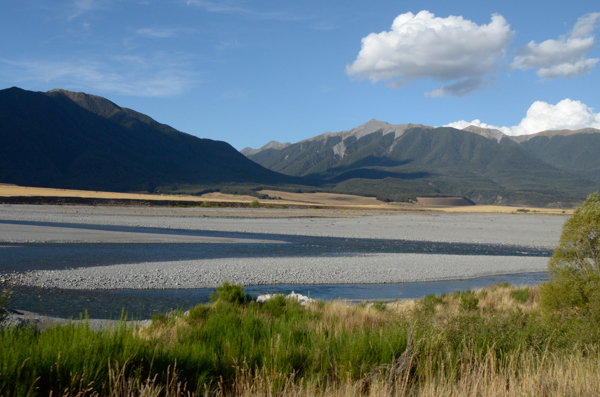
The river meanders over a wide bed.
The train had an open observation car where passengers could hang out for picture taking. I made occasional treks there when it looked like we were approaching some interesting landscapes.
There appeared to be two levels of service on the train. Our car had reserved seats with tables and tea. Some other cars had regular train seats. There was also a club car serving refreshments.
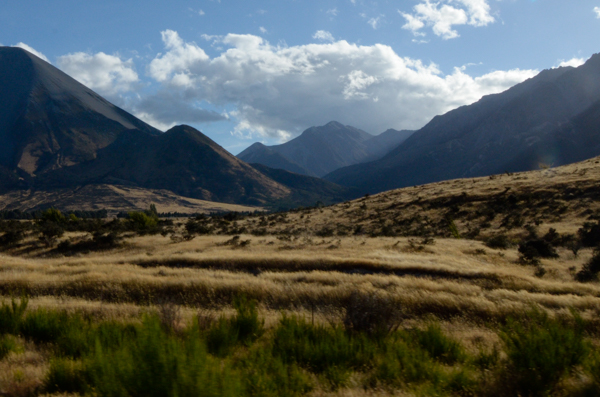
New Zealand didn't have many native grasses prior to European settlement and the native ones were not sufficiently nutritious for European stock. Settlers brought in foreign grasses to plant on the land they cleared for their new farms. Some of the grasses have become invasive.
Chas told us that farmers are bringing in fescue, which shows to me that they haven't yet learned about the dangers of introducing foreign plants. I warned him that it won't be long before they will have fescue eradication programs ... and they won't work.
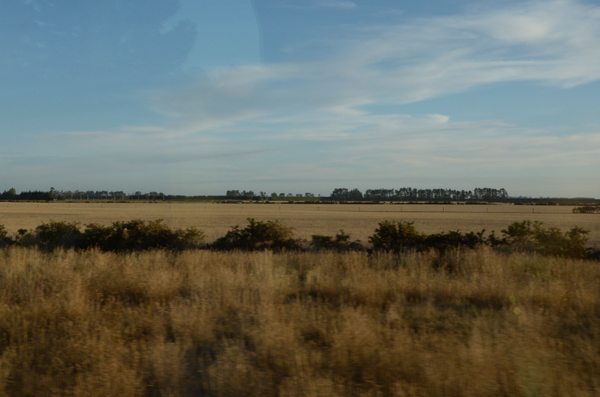
We knew we were close to the end of our journey when we arrived at the Canterbury Plains. This is about the only flat region of New Zealand and it is certainly flat! And dry due to the prevailing drought.
Our train journey came to an end and we were happy to see Chas, Taf, and the bus waiting for us. Chas had worried that the train would get in before they had time to get over the mountain and drop off our luggage at the hotel. It wasn't a problem! We finally got supper about 9pm.
Click your "back" button to return.